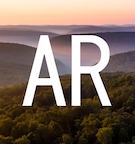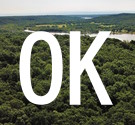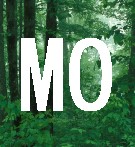Geographical Index > Canada > British Columbia > Report # 12855
(Class B)
Submitted by witness on Thursday, October 20, 2005.
Various incidents on British Columbia Expedition
(Show Printer-friendly Version)
YEAR: 2005
SEASON: Summer MONTH: August DATE: 25 - 28 PROVINCE: British Columbia COUNTRY: Canada NEAREST TOWN: [Sunshine Coast region - North of Vancouver] NEAREST ROAD: Pacific Coast Highway OBSERVED: I would like to thank the BFRO for the excellent outing on the Sunshine Coast [British Columbia, Canada]. I am sure that the attendees will all agree that it was a hair raising time. I was amazed at the knowledge and the experiance that the seasoned investigators had brought to the table.
Although there was no direct visual sightings, it gradually became obvious to everyone that some sasquatches were in that area.
The first night that I was out with John and Phillip from Vancouver, I was not prepared to spend that first night in my truck, especially with the amount of vocalizations we had been hearing from the mountain side above us, so I headed back to base camp. On the way back I thought I had spotted something upright stepping off of the highway in the same dark stretch were other locals had reported road crossing sightings. It was late and I had been up for a long time, so I'm not sure about that one.
On the second night, John, Phillip and I were joined by Mike and Warren at our outpost. Once again it was a clear starlit night. We heard more vocalizations as well as some knocks, but not as many as the previous night.
Mike kept us entertained with his technological support items. Warren and I ended up crashing out in my truck only to wake up cramped and sore.
The third night was utterly fantastic. After two nights of simply setting ourselves up as observers and listeners the tactic was changed to one of gentle interaction. It was like we had let them know that "we are here and mean no harm" to "we are here, and we mean no harm, so why not come down closer to us". And they did. The way we were strung out on that road was just one big invitation. There were lots of movement heard and a fair bit
of vocalizations as well. It got really exciting about 10pm when one participant stated that something had walked down and was crouched behind her tent. After about 5 or 10 minutes, when asked she said it was still there but she didn't know what to do next. I suggested that she unzip her tent, which she did. The visitor was heard walking away. This was heard by the girl, her boyfriend and the guy in the next tent. It walked between the two tents and
departed briefly then departed.
Shortly thereafter, the couple went outside their tent briefly. After about 10 minutes they went back inside their tents. Shortly after going back inside she reported via walkie talkie that the visitor had returned from the direction, but was not as close as before. It eventually departed. One of the guides walked over to their tents and sat there for a few minutes to see what would happen. After a few minutes of quiet he spread out M&M's (candy) on top of a cooler. The idea was that if a bear was snooping so close to the tents, if it came back it would find and eat the pile of M&M's on the cooler. But if it came back again and didn't disturb the M&M's at all, then it probably wasn't a bear.
After a long interval of not hearing any sounds the three people in those two tents decided to turn in. They slept and did not wake to hear anything return. The M&M's were untouched when they woke in the morning.
I and one of the local guides positioned our vehicles on the logging road above where the girl's tent was situated. We had our vehicles backed up to each other and cooked dinner there.
When I went to sleep I had to put all of my equipment away and I closed up the back of the truck. I was going to sleep on the passenger side, as there would be more room without the steering wheel in the way. The doors were locked and the passenger window was down about an inch.
At 4:30 am something banged my truck. Either the side, tailgate or the roof. I woke up immediately but (I hate to say it) I could not or would not open my eyes. I sat there for what seemed like forever not moving, listening for what might be outside and then I heard distinctive heavy bipedal steps walk away from my truck heading down the road.
It was gone, or so I thought. I had keyed the mic on my walkie-talkie to see if anyone was awake. It must have heard the noise through the gap on my window because I heard it pace back past my truck to a position just behind me. I think that it had been standing between the two trucks and slightly to
the centre of the road watching the security light flash on my dashboard -- only a guess.
It was then that I broke radio silence and asked if anyone was up as I had
something outside my truck. I was very scared. The girl who had
the visitor earlier heard me and talked to me for a bit and then
dropped off.
While I was talking to her the thing outside my truck walked
away down the road. I believe that John, who had been listening to the two
of us on the radio, stated that he had heard whatever it was walk from
my position towards his and then angle up into the woods. This whole experiance lasted 15 to 20 minutes and it took me another 15 before I would get out of my truck.
Again, I would like to state that I had a fantastic time and I believe I am now better prepared to check the occurances in my local area.
Thank you for letting me be part of this!
Blaine McMillan
Vancouver Island OTHER WITNESSES: There were nearly twenty people on the expedition. Hard to say how many people were present when various things happened. OTHER STORIES: We spoke with several good local witnesses. They had obviously seen a sasquatch, possibly different ones, in the same general area. TIME AND CONDITIONS: Mostly at night ENVIRONMENT: Thick Pacific Northwest forest. Mountains and fjords.
Follow-up investigation report by BFRO Investigator Matthew Moneymaker:
This commentary applies to other BFRO expeditions as well.
Some wonder, with all the activity being noted during this British Columbia expedition, why there wasn't a frantic effort to get the animals on camera.
There was more than one camera effort during this expedition. Not every attendee was involved, so not every attendee will describe it in their reports.
The approach of these animals must be observed for a few nights in a row to see (hear) how they will approach, where they will approach, and how close, before a multi-position camera effort can even be planned.
Regular photo cameras will not work -- they are handheld, and they don't see very far in the dark, even with the brightest flash.
Sasquatches will normally avoid illumination, even most infrared illumination. Sasquatches (and other animals) will also notice flashes at night from trail cameras being aimed, tested, or falsely triggered from insects or falling leaves.
Laying in wait in a tent with a spotlight and camcorder ... will not work either. Sasquatches generally won't come close to tents unless the forest is thick enough to allow them to disappear in a second or two -- faster than an auto-focus mechanism can adjust, especially on a dark moving object.
A person has but one chance if he/she comes bursting out of a tent like that, and will likely miss that chance.
People who are not quite as impatient, are content, intially, with a first-hand, personal confirmation (and group confirmation) of their existence and their presence in a given area.
Sasquatches usually won't come close (within a few feet) of a human unless the human is contained in a tent, a vehicle, etc. The noise of a person exiting a tent or a vehicle provides a safe headstart for their escape.
The big question for the people present is whether the local sasquatches are bold enough to come down to a road, and/or approach vehicles, tents, etc., after everything has settled down and everyone has turned in for the night.
If the sasquatches will do this then a camera effort can be as passive as it needs to be, in order to fool these very intelligent animals, but it won't happen in earnest until the second-pass expedition.
The most passive camera traps are ones requiring no installation, testing or camoflauging at the site, such as when cameras are already set up inside vehicles.
Rigging up surveillance cameras inside vehicles is a much bigger project than one might assume, and needs to begin long before the expedition.
If it succeeds at a given spot then it can succeed repeatedly there. If it does not succeed, it can be relocated to other spots as quickly as the vehicle can be moved.
When it comes to fairly remote locations with logging roads, vehicles with surveillance systems installed will be the most flexible, most responsive, most reliable, most discrete, and most passive way to gather footage and recordings.
Rather than a conspicuous, noisey installation and testing effort, it will only require flipping a switch inside the vehicle, then just pretending to be a camper who isn't too concerned about whatever is out there in the dark.
No one wants to waste their time, so they'll choose to be passive observers for a weekend, before they'll be motivated to devote many other weekends to it. That applies to scientists, photographers, journalists, lawyers, policeman, hunters, etc. ... It's human nature.
--------------------------------
All other surveillance options require installing and camoflauging cameras (trail cameras, camcorders, etc.) around a camp perimeter, or inside a treeline, or along a path approaching a camp.
Among other things, setting up a perimeter with cameras changes the regular smell of a natural area, not just because of the human scent left around. A minor construction project will disturb the soil and turn things up that will release their own distinct smells. Even just kicking up leaves or crunching through pine duff will change the smell of the immediate area. It will smell like a disturbance has occured there, right where the sweaty human scent will be also. The deviation from the normal forest smells will easily catch the attention of approaching large mammals. That immediate area will be avoided.
Disturbances and human scent on a road are a different matter entirely. That's where they normally occur. Consequently they don't have a tendency to spook animals familiar with the area.
The sites for installing cameras cannot even be selected until some interchange has recently occured there, and has been witnessed by plenty of people. But at that stage the installation of cameras is even more conspicuous and noticeable. It would look and smell to anything watching as if traps were being laid.
Trail cams seem quick and easy to set up. They are not - not when directed at these animals. They have to be set low to the ground, and aimed and tested and camoflauged. More than one needs to be set up if the effort is going to rely on these types of cameras. The setup of trail cameras is as conspicous as the setup of surveillance video cameras, and leaves just as much human scent around.
-----------------------------------------
Approaching sasquatches in the field is not like hunting bear. It is more like skirmishing with a lost tribe of nocturnal humans.
They will observe a camp through the trees and will patiently watch for long periods.
If they start moving to a different position among the trees they will quickly stop when someone looks over in their direction. They are very observant.
They will notice what people are holding in their hands, and will sometimes whistle signals to each other when humans do things like get up from a camp chair or emerge from a tent.
They seem to notice when people are carrying objects like camcorders or other handheld devices.
They seem to know the difference between men and women.
Behaviorally, they more like curious, but skittish, nocturnal humans than like bears, etc.
It is very difficult for the uninitiated to appreciate how intelligent sasquatches are. People find it difficult to accept or understand that camera/audio efforts directed at sasquatches are very different efforts than camera/audio efforts directed at other species.
-----------------------------------------
With all that said, there were attempts to photograph/video the prowlers on the final night of the BC expedition. Various people placed trail cameras on their car bumpers. One thermal camera was pointed out from the tent looking along a portion of the road where one of the animals walked. It rained heavily that night though.
Sasquatches don't seem to come around when it rains.
You may have noticed that you don't see any (or many) Class A sightings during rainstorms. People see them in high winds, and even in snowstorms, but not in cold, heavy, rainstorms.
No one was disappointed in the results of the BC expedition ... quite the opposite. They all helped find a very hot location for that time of year, and want to go back next year to do more.
Everyone on the first-pass BC '05 expedition will be returning next year with more equipement. They will have ample time before then to gather surveillance equipment, install it in their vehicles, camoflauge it and test it.
We predicted accurately that we wouldn't get video footage in British Columbia this year.
We're predicting that we will get footage in British Columbia next year.
About BFRO Investigator Matthew Moneymaker:
Matthew Moneymaker is originally from the Los Feliz District of Los Angeles, California.
- Bachelor of Arts in English Literature from the University of California at Los Angeles (UCLA).
- Juris Doctorate (Law degree) from University of Akron School of Law
- Founder of the Bigfoot Field Researchers Organization,1995.
- Writer and co-producer of the Discovery Channel documentary "Sasquatch: Legend Meets Science", 2001.
- Co-producer of the TV Series "Mysterious Encounters" for the Outdoor Life Network (OLN Channel), 2002.
- Producer of the "2003 International Bigfoot Symposium" (Willow Creek Symposium) DVD set, 2004.
- Co-host of "Finding Bigfoot" on Animal Planet Channel, 2010 - 2017.
- Current Director of the BFRO
- Available for private bigfoot expeditions and conferences. To inquire please email ContactUS@BFRO.net

|

























